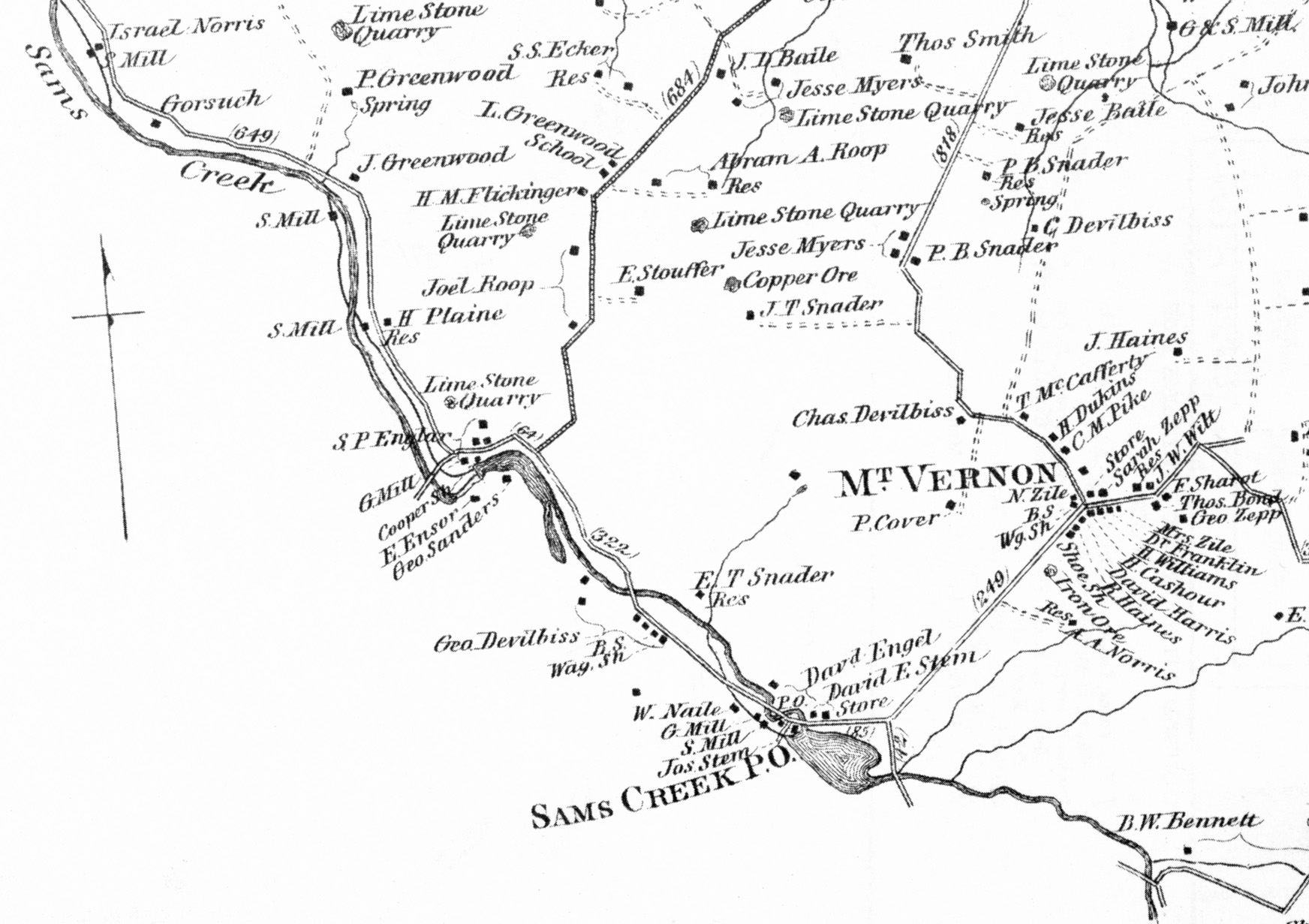Carroll Yesteryears
31 August 2008
Ponds Once Source of Food, Fun
By Mary Ann Ashcraft
Since the 1700s, streams have powered roughly one hundred grist mills, saw mills, and fulling mills in what is now Carroll County. Understanding the mechanics of mill operation is beyond me. I narrowly escaped failing the mechanics portion of physics, but I can appreciate mill ponds, mill races, mill dams and the roles they played. It’s easy to comprehend diverting water from a stream or pond and directing it along a mill race toward a waterwheel; it is just how the gears work which seems so mysterious. So we’ll stick to the aspects of water which don’t require an understanding of physics.
I love the fact that a relatively small stream, like Sam’s Creek in western Carroll County, could power so many mills along its relatively short length. A look at the 1877 county map identifies about eight separate mills between the headwaters east of Marston and where it meets Little Pipe Creek outside Union Bridge. Obviously, considerable cooperation was required for every mill operator to get his share of water power out of a common stream, especially in dry years. Deeds reflect that cooperative spirit, but there must have been many times when things didn’t go smoothly.
In the winter, mill ponds provided fun in the form of ice skating and happy skating parties as well as a source of ice to pack in your icehouse among layers of straw for the following summer. How many recent years do you recall that ice on local ponds was thick enough to cut and stash away? I can’t remember many.
And in the summer, mill ponds were a great source of food as people fished or seined them. An August 1882 article in the Democratic Advocate describes the seining of several mill ponds near the town of Sam’s Creek. “On Thursday morning of last week a lively crowd of men from Westminster seined Mr. G. W. Devilbiss’ dam, catching a fine lot of fish. After making several hauls, they then partook of some refreshments of different kinds, after which they went and seined Mr. E. C. Ensor’s dam, catching in all about three and a half bushels of fish, among which were several bass and a monster eel, which measured 3 feet in length and nine inches in circumference.”
Seining of J. L. Devilbiss’s dam yielded 120 suckers measuring from 8 to 14 inches as well as several bass, the largest weighing three pounds. A seining operation elsewhere brought up a huge snapping turtle which hopefully was handled with care. About thirty years ago, while driving along Stone Chapel Road near Little Pipe Creek, I spotted a gigantic turtle crossing the road. Having never seen a snapper, I didn’t know what I’d stumbled upon, but this fellow was scary-looking enough that I had no desire to get very close or help him across the road if he couldn’t make it on his own four legs. A reptile identification book told me just what I’d seen!
Helen Shriver Riley remembers a time when the mill race at the Shriver grist mill was drained. She and her brother waded into the shallow water, plucked out fish with their bare hands and proudly took them home for lunch. “But they tasted like mud,” she recalls with a grimace.
Mill races had to be drained periodically to remove the buildup of silt. Large groups of men cooperated to dig out the mud and reinforce the banks. It was a task way beyond the ability of one or two men and many hands made light work, even doing that onerous job.
Mary Ann Ashcraft is a library volunteer for the Historical Society of Carroll County.
Photo credit: Historical Society of Carroll County

Photo caption: This detail of the New Windsor district from the 1877 Illustrated Atlas of Carroll County shows Sam’s Creek plus various mills and mill ponds near the tiny historic village with the same name which sits along the Carroll-Frederick border. The area shown on the map as Mt. Vernon was later known as Marsden.





